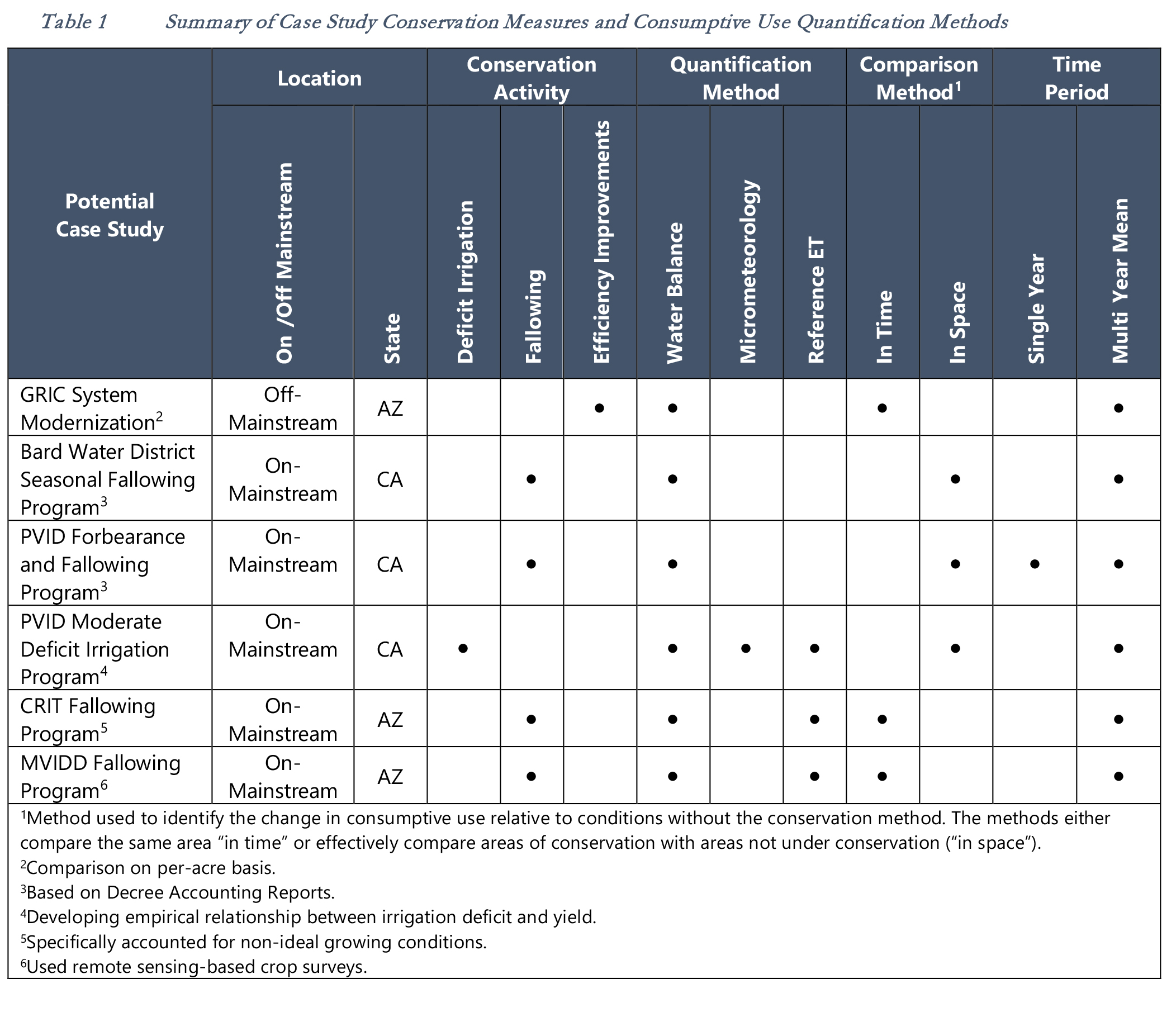Exploration of Quantification Methods for Agricultural Water Savings in the Lower Colorado River Basin
Quick Links:
- Executive Summary
- TM 1 - Project Definition Summary
- TM 2 - Summary of Significant Findings from Literature Review and Recent/Current Activities in the Lower Basin
- TM 3 - Summary of Case Study Definitions, Site Selection, and Evaluation Process
- TM 4 - Case Study Evaluations
- Compiled Report
The Bureau of Reclamation's WaterSMART (Sustain and Manage America’s Resources for Tomorrow), selected and provided funding for this Exploration of Quantification Methods for Agricultural Water Savings in the Lower Colorado River Basin (LCRB) Pilot Study, which was financially matched by three non-Federal partners to explore methods of quantifying agricultural water savings through the knowledge shared by participants and an evaluation of existing case studies.
The Pilot Study was completed in November 2021 and looked to identify and describe methods currently used to quantify agricultural water conservation and evaluate them for consistency and accuracy in the context of the Bureau’s water accounting methods. Additionally, it evaluated existing case studies and provided recommended approaches to improve the methods to quantify agricultural water conservation in the LCRB.
The central objectives identified in Technical Memorandum (TM) 1 of the Pilot Study were:
- To identify and describe methods currently in use to quantify agricultural water conservation.
- Evaluate those methods for consistency and accuracy with Reclamation’s Lower Colorado River water accounting methods.
- Evaluate existing case studies using a combination of research and applied science.
- Recommend approaches to improve methods of quantifying agricultural water conservation in the LCRB.
TM 2 of the Pilot Study summarizes significant findings from existing literature and activities within the LCRB. Consumptive Use (CU) quantification methods or method classes, focused mainly on Evapotranspiration (ET), were reviewed including water balances, micrometeorology, reference ET/crop coefficient modeling and spatial crop surveys, and remote sensing ET modeling. A thorough literature review included examination of deficit irrigation, on-farm irrigation system conversion, and seasonal fallowing.
Six case studies, from nine potential sites, were selected for examination as part of TM 3 of the Pilot Study; the Gila River Indian Community (GRIC) Irrigation System Modernization, the Bard Water District (Bard) Seasonal Fallowing Program, the Palo Verde Irrigation District (PVID) Forbearance and Fallowing Program, the PVID Moderate Deficit Irrigation Program, Colorado River Indian Tribes (CRIT) Fallowing Program, and the Mohave Valley Irrigation and Drainage District (MVIDD) Fallowing Program. 
The results of the Project were condensed into a summary decision tree. The full set of assumptions associated with each quantification method are discussed in TM4. 
For additional information or questions, contact:
e-mail: jdodds@usbr.gov
phone: 702-293-8164

